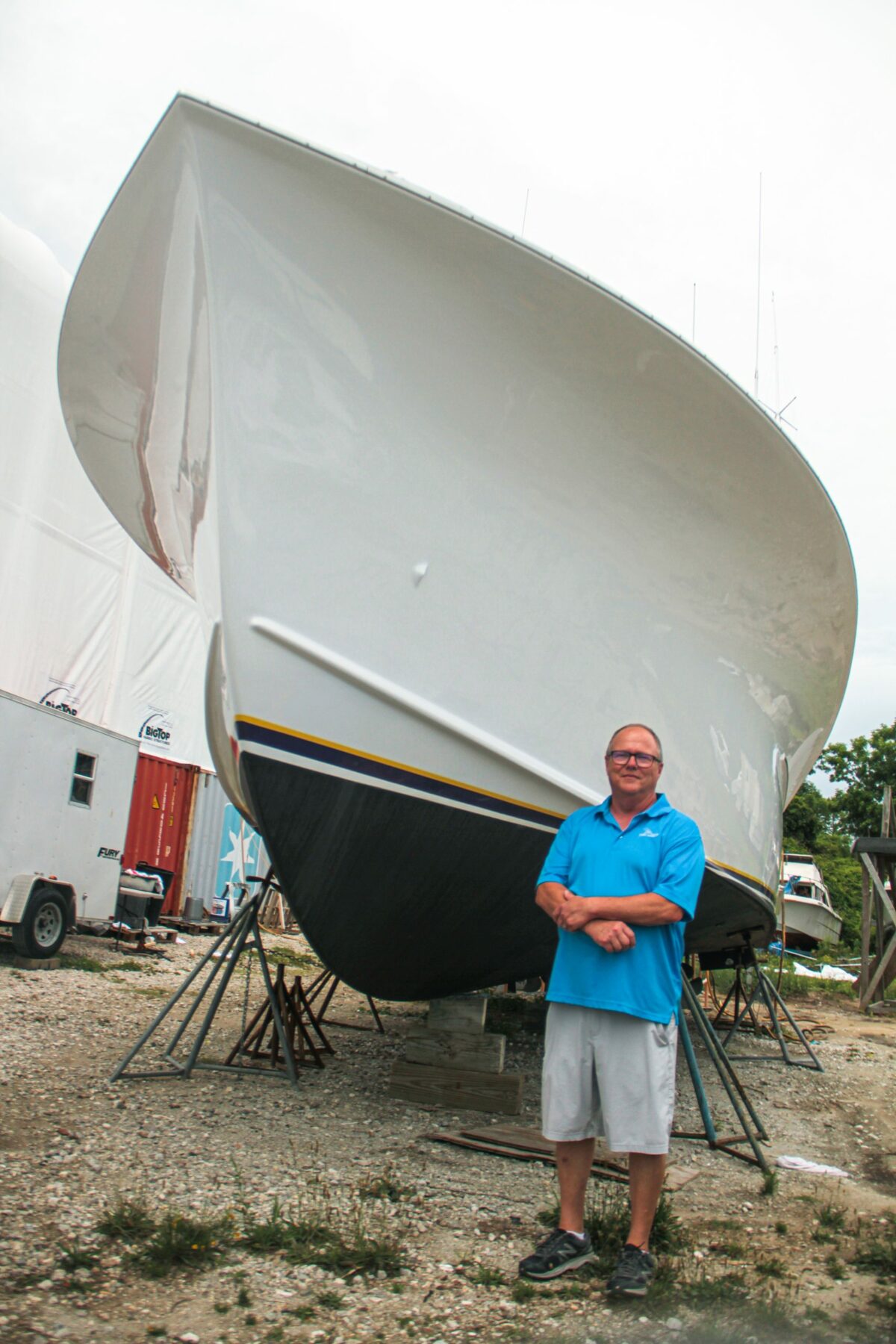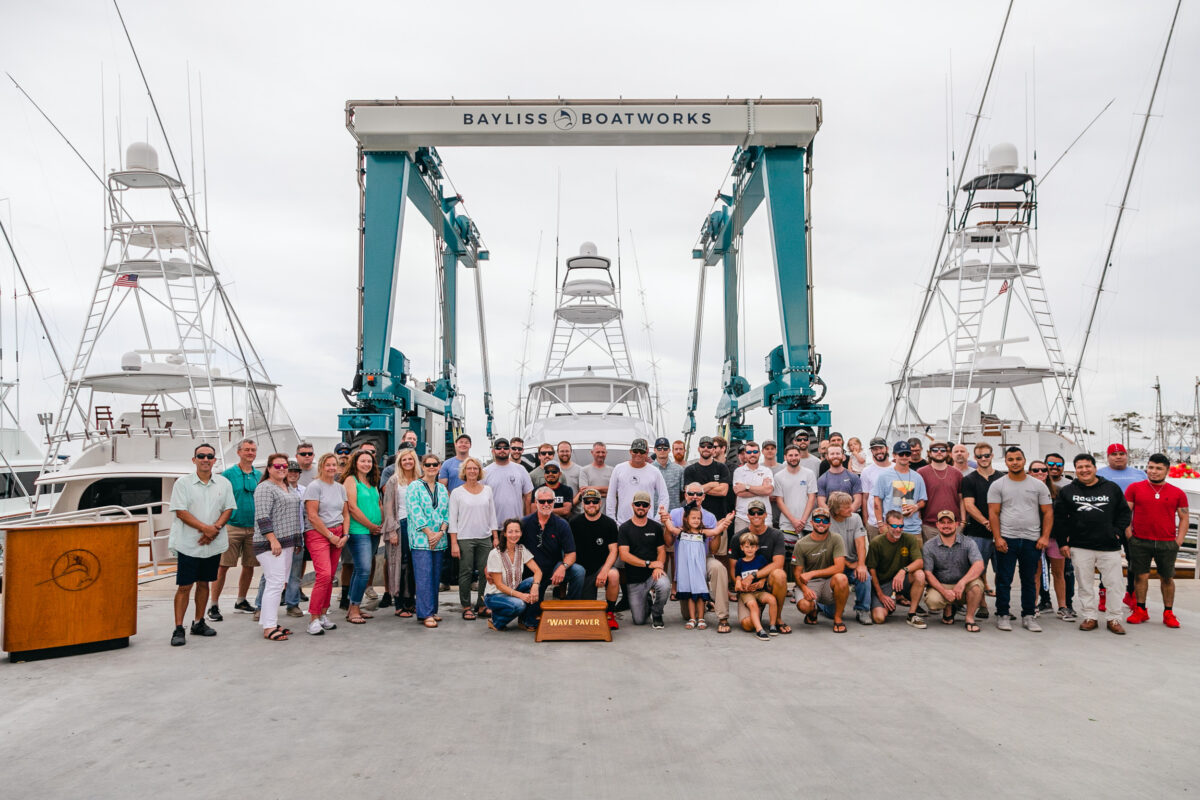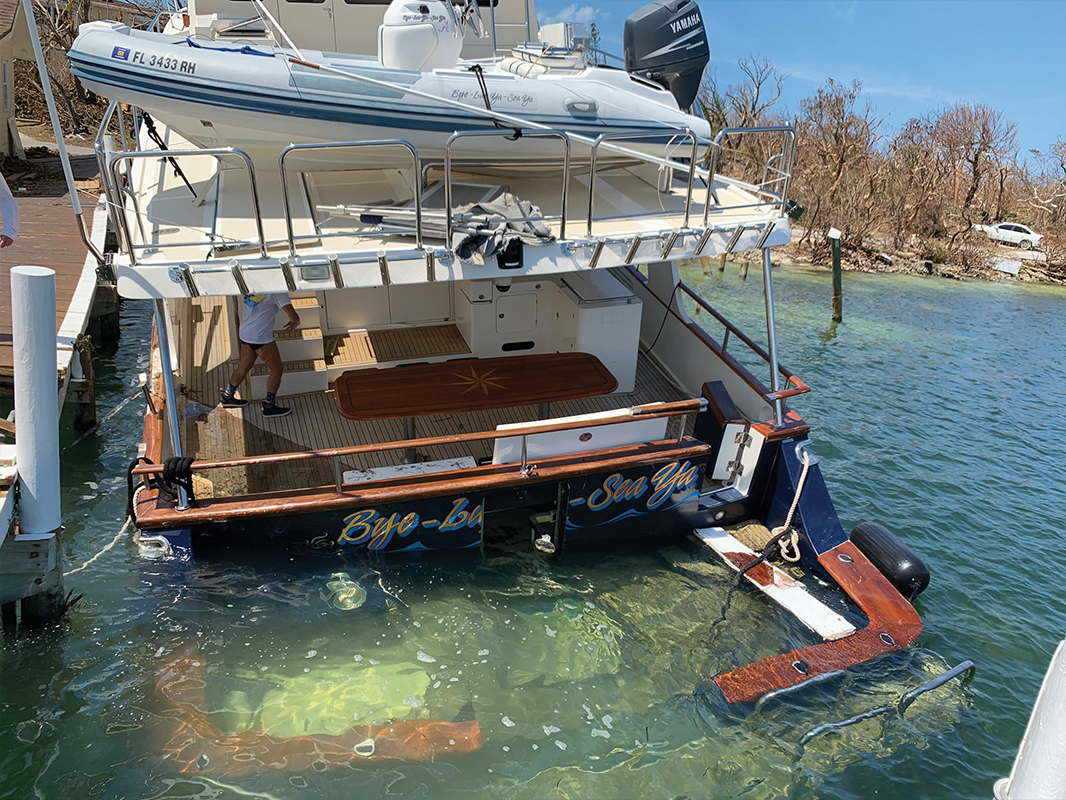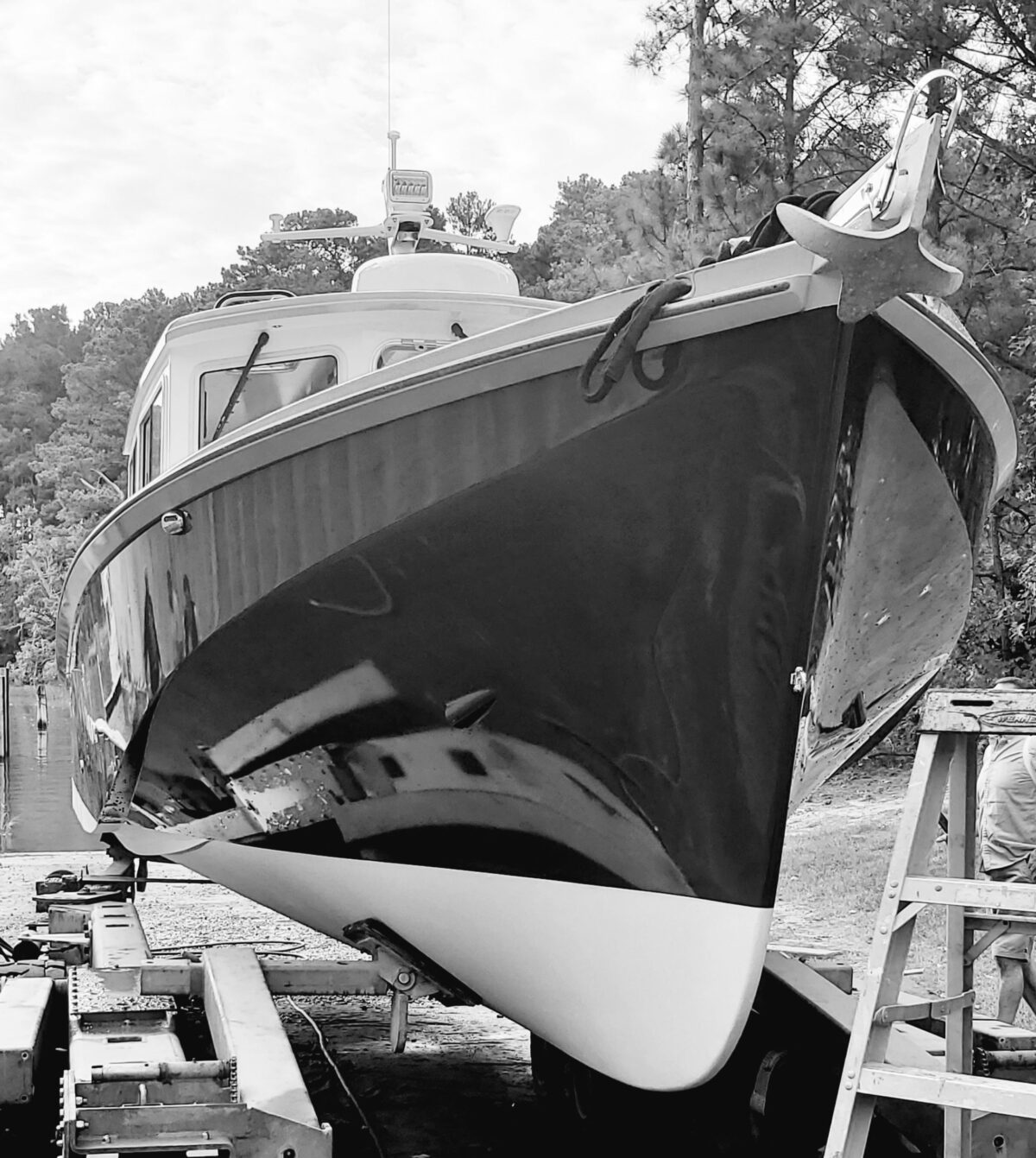The construction of marine vessels has long relied on multiple kinds of materials. Starting with wood, other techniques developed and continue to evolve including steel, aluminum, fiberglass, high tech foam cores, exotics like carbon fiber, and¦wood. The sportfishing world employs many of these for different reasons. This discussion is centric to higher performance planing hulls, so well examine wood and various composites, metal doesnt make sense for this segment. Like they say, there more than one way to skin a cat. While some consider wood to be outdated, this is far from the truth. Utilizing wood as a main structural component remains common among modern custom builders and for good reason. Cold molded builders have optimized the use of wood along with Fiberglass Reinforced Plastic skins. This results in relatively light, robust structures. Various types of wood are regularly used in hull plating. And Douglas fir remains an optimal choice for stringers, shell stiffeners and equipment foundations. These hulls are true composite structures as they mix the use of wood as core and FRP skins. The wood takes most of the load in this arrangement with the FRP helping while also providing watertightness, so the wood stays dry. From a structural design standpoint, wood is strength critical. So, under applied loads, cold molded hulls tend to be very stiff once they are strong enough. The wood also provides damping qualities minimizing noise and vibration. These attributes help create that cold molded feel to which people refer”solid and quiet. The term fiberglass covers many different actual materials. For this discussion, well consider FRP as standard E-glass materials which are most commonly used in both custom and production builds. Most production hulls are laid up in molds using FRP materials. Single skin layups provide fast and relatively simple plating structure. Relatively cheap, this is the obvious choice for high volume builders. A single skin laminate relies on the relatively high strength of the FRP materials; usually directional plies which include 0/90, +/-45, quadraxial, and uni, among many others. Mat is also used to build up thickness and resist print through. Different than wood, fiberglass is deflection critical. So, the design process will usually be based on maximum allowed deflections”once the FRP stackup is stiff enough, it plenty strong. That why many fiberglass items move significantly without ever breaking. Panel length to deflection (l/d) ratio is very important in FRP design. For non-walking decks, minimum l/d ratio is around 80. As this number gets smaller, the laminate flexes more, and if low enough, de-lamination can occur. Walking decks, while usually being cored, require higher stiffness ratios around 200 to avoid sponginess under foot. Sandwich construction is another approach to shell laminates using all composite materials. As opposed to single skin, sandwich construction uses a core, commonly a closed cell foam, to provide thickness in the stackup. The core is encapsulated on both sides by relatively thin FRP skins. This results in a light and stiff panel. Thickness is key in creating stiffness. Allowable deflection ratios with sandwich panels are typically designed to be higher than that of single skin laminate. Because relative stiffness differs greatly between the FRP skins and foam core, l/d should be approximately 120 or greater to help minimize the potential for delamination. While cored panels provide great stiffness and strength as they get thicker, weight increases very slowly. This is due to the relatively light core material. The FRP skins are thin and are located far from the laminate central axis. Modern foam cores include products such as CoreCell, Divinycell and Airex among others. Foam core construction does require somewhat more skilled workers to laminate and repair. And it requires scarfing down to single skin in way of hull penetrations. However, a cored hull bottom provides a very light laminate while meeting strength and stiffness requirements. Construction methods vary for these different materials. Cold molded methods require jigs. Single skin construction needs molds to lay up the shell. Cored sandwich construction can use either jigs or molds depending on desired production volume. Modern craftsmen continue to produce complex structures, regularly mixing material types and fabrication methods. These choices each offer individual benefits and have their own applications. Every builder has their favored approach, but processes continue to evolve resulting in even higher strength and lighter structures.













